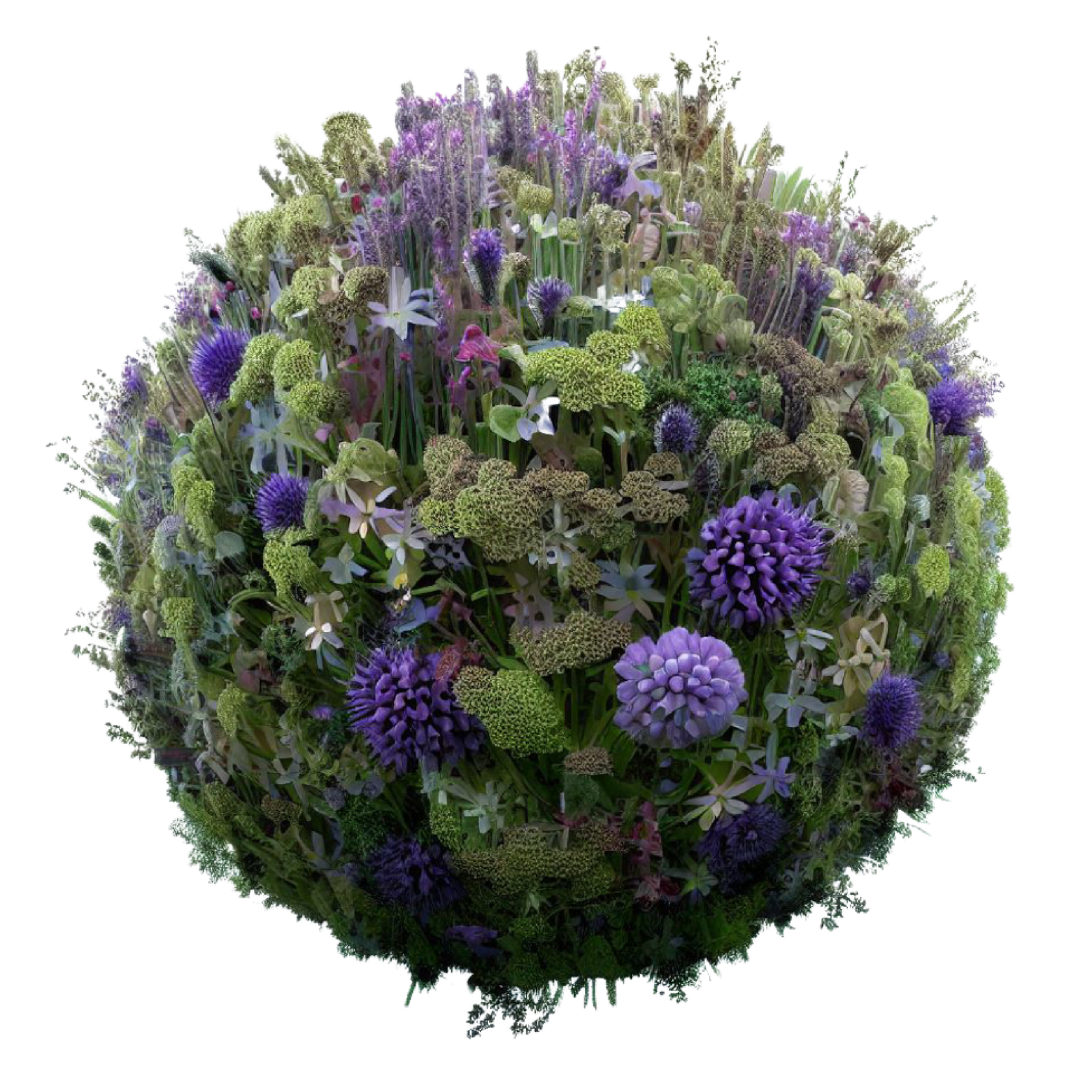We cycled for over 100 miles and didn’t go through a gate. The Transylvanian landscape was without fences, hedges, or ditches.

Travelling by train across Europe to get to Romania the lack of fences signalled an entirely different type of farming. In this case, there were huge ploughed fields or monoculture crops stretching into the distance. The original landscape had been obliterated in homage to large tractors and other vast agriculture machinery. it was clear that the earth had been tilled, poisoned, fertilised and brutalised so that it was now unable to host not just birds, bees and insects but the myriad of other organisms that make up soil structure and create the earth’s living, thriving eco-systems.
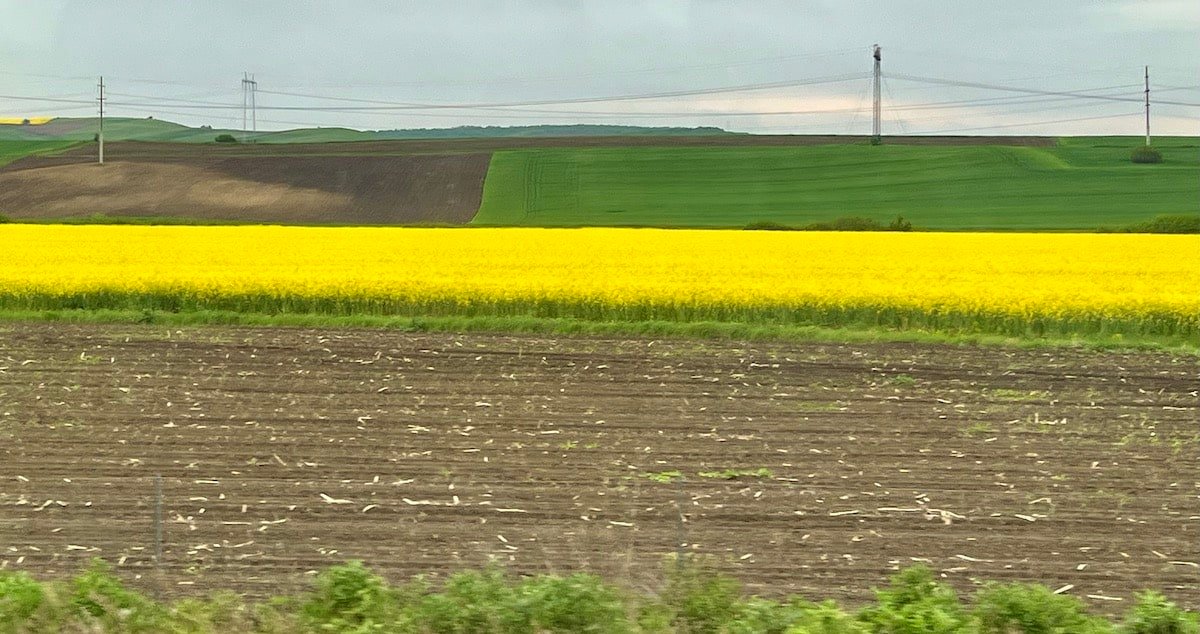
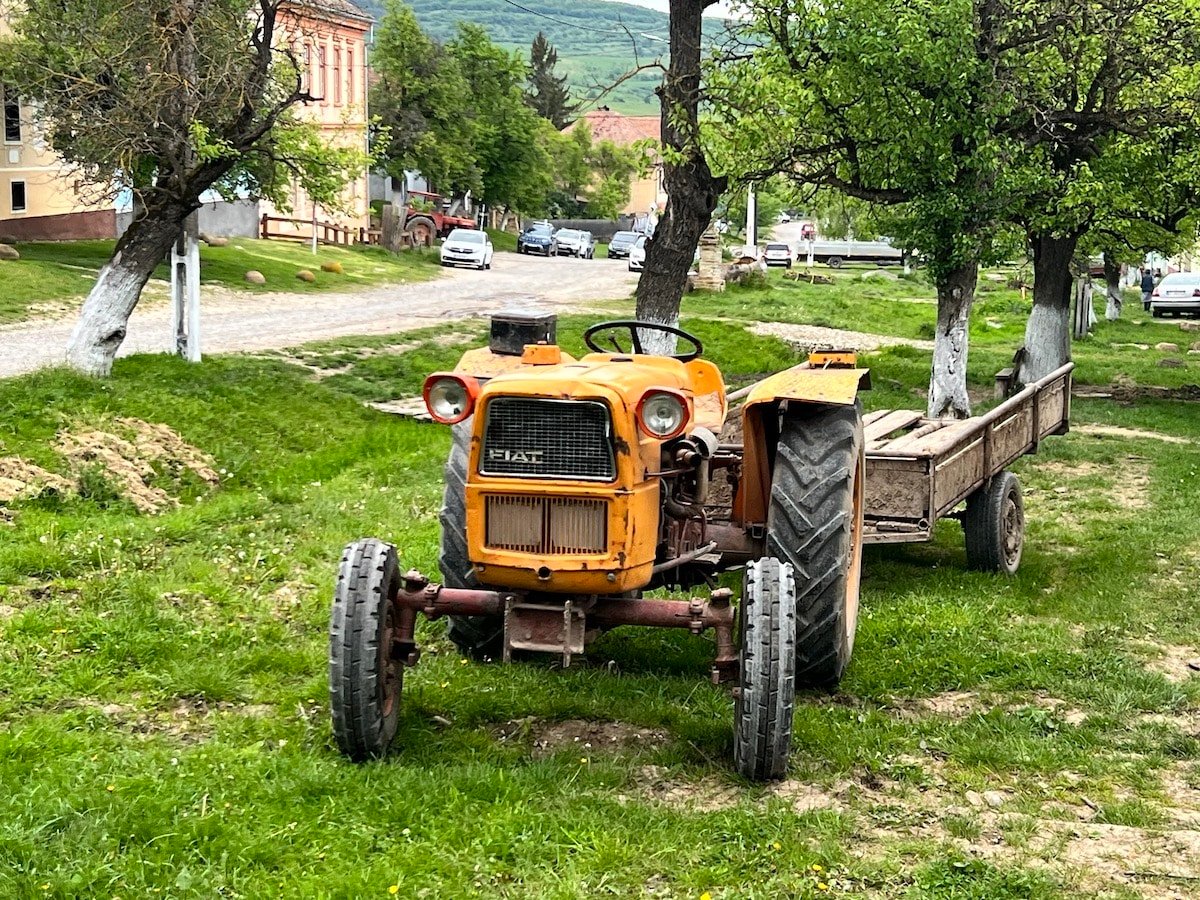

Back to Romania. There is agriculture. There are tractors. And there’s livestock. But there was also an abundance of cuckoos, wild strawberries, orchids, colourful beetles and so much more – there was even a stork’s nest in one of the villages we visited.
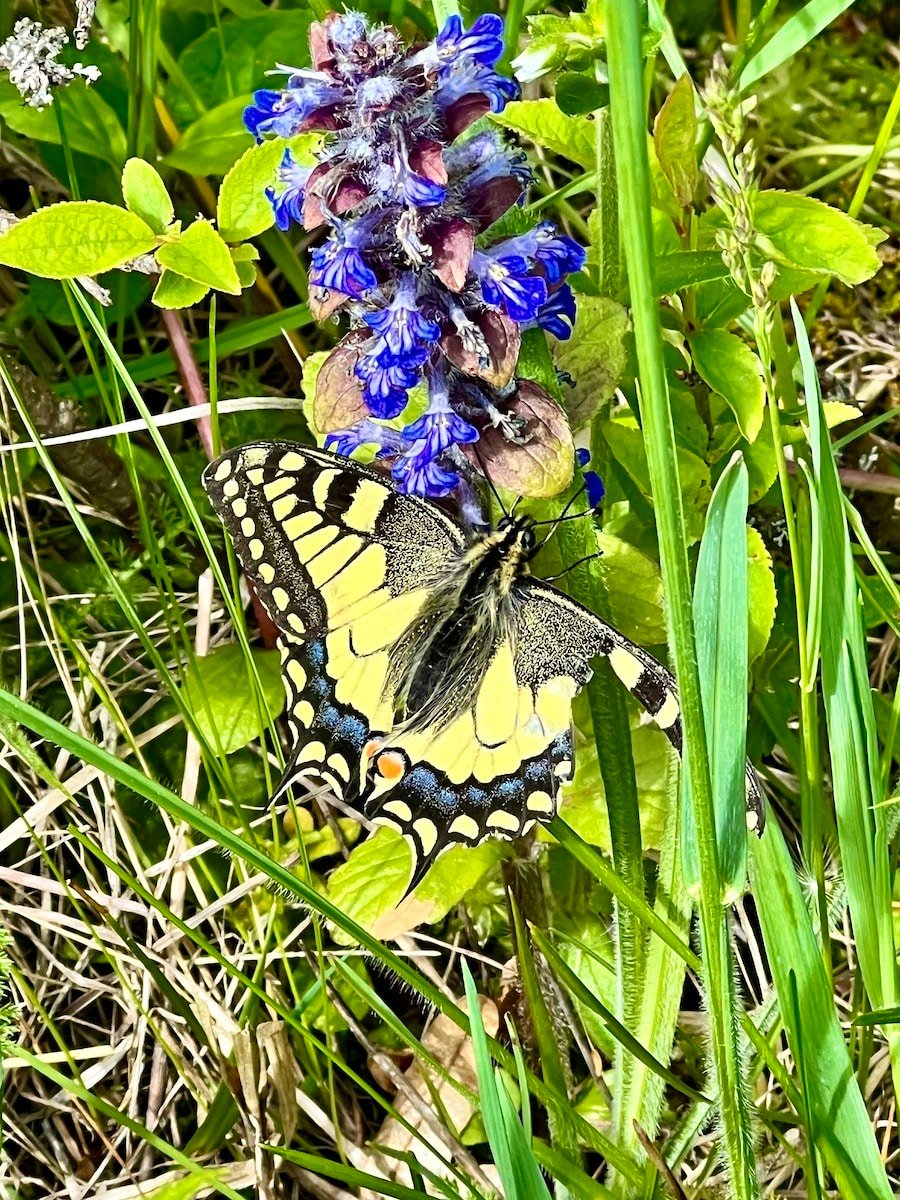
There are over 200 butterfly species in Romania compared to only 40 in the UK.
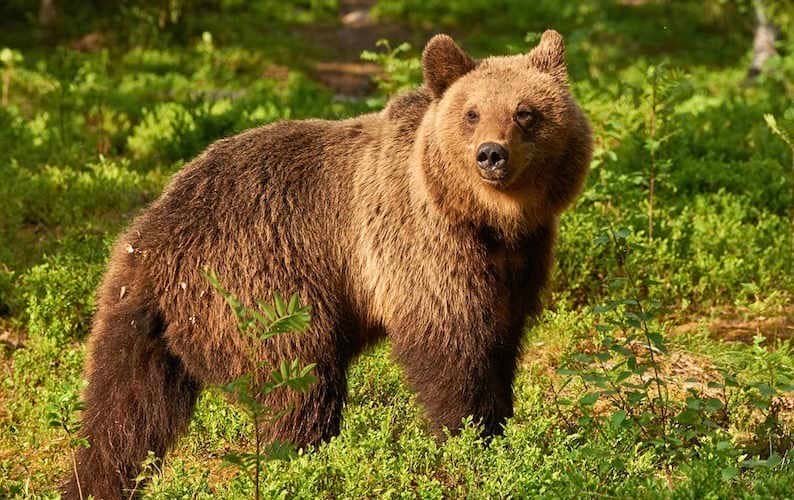
And, I saw a bear! Bears and wolves still live in the forests of Romania. We saw bear paw prints in several places along the route but were told that it was very unlikely that we’d actually see one. It was the last morning of our Slow Cyclist trip when we set out earlier than normal for a final glimpse of the rolling and verdant landscapes we were leaving behind us. There were four of us cycling a short distance behind the others in our group. We heard the bear before seeing it lolloping through the trees – luckily heading away from us.
Our guide went back to whooping as we went on to deter any other bears from crossing our path. We were interested to discover that he was prepared for a closer encounter as he had a can of ‘bear spray’ in his supplies. Apparently, it can propel the peppery deterrent several meters and it encourages the bear to move on, rather than attack!
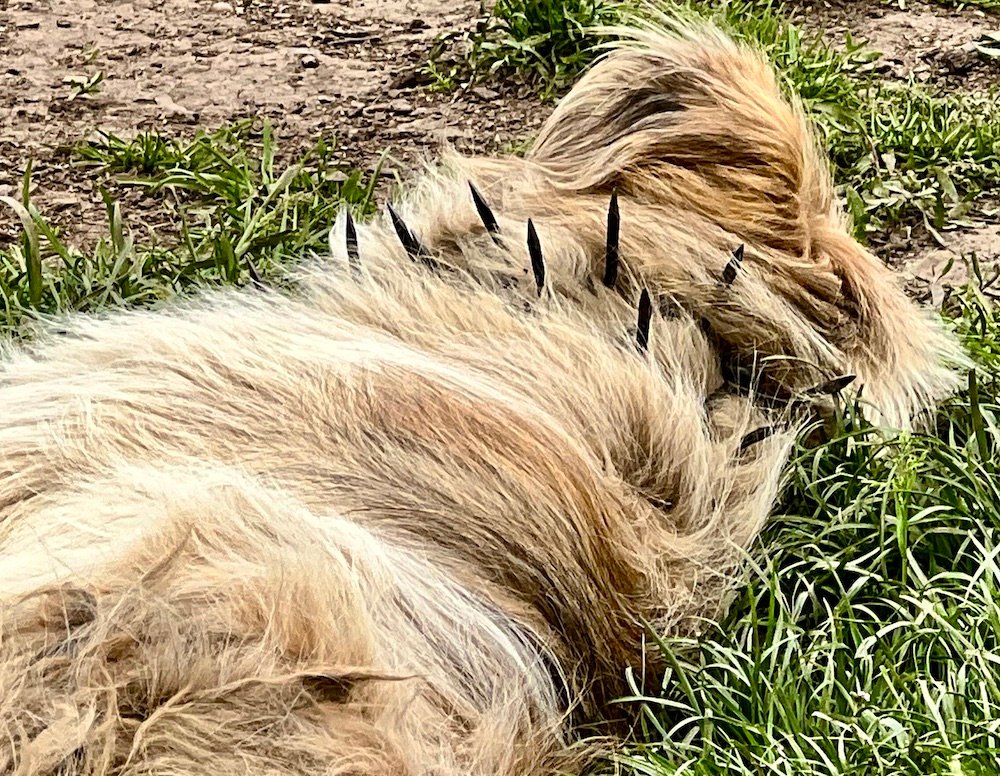
You may be wondering how the locals keep livestock without fences and gates – and how do they protect them from bears and indeed wolves. The answer it appears is dogs. These rather scruffy and fearsome creatures are not just kept as pets, they play a vital role in corralling the sheep, cows, and goats wherever they need to be – and in protecting them from attack. We were surprised to see some dogs with spiky metal collars, apparently to protect them from being savaged by the bears.
.
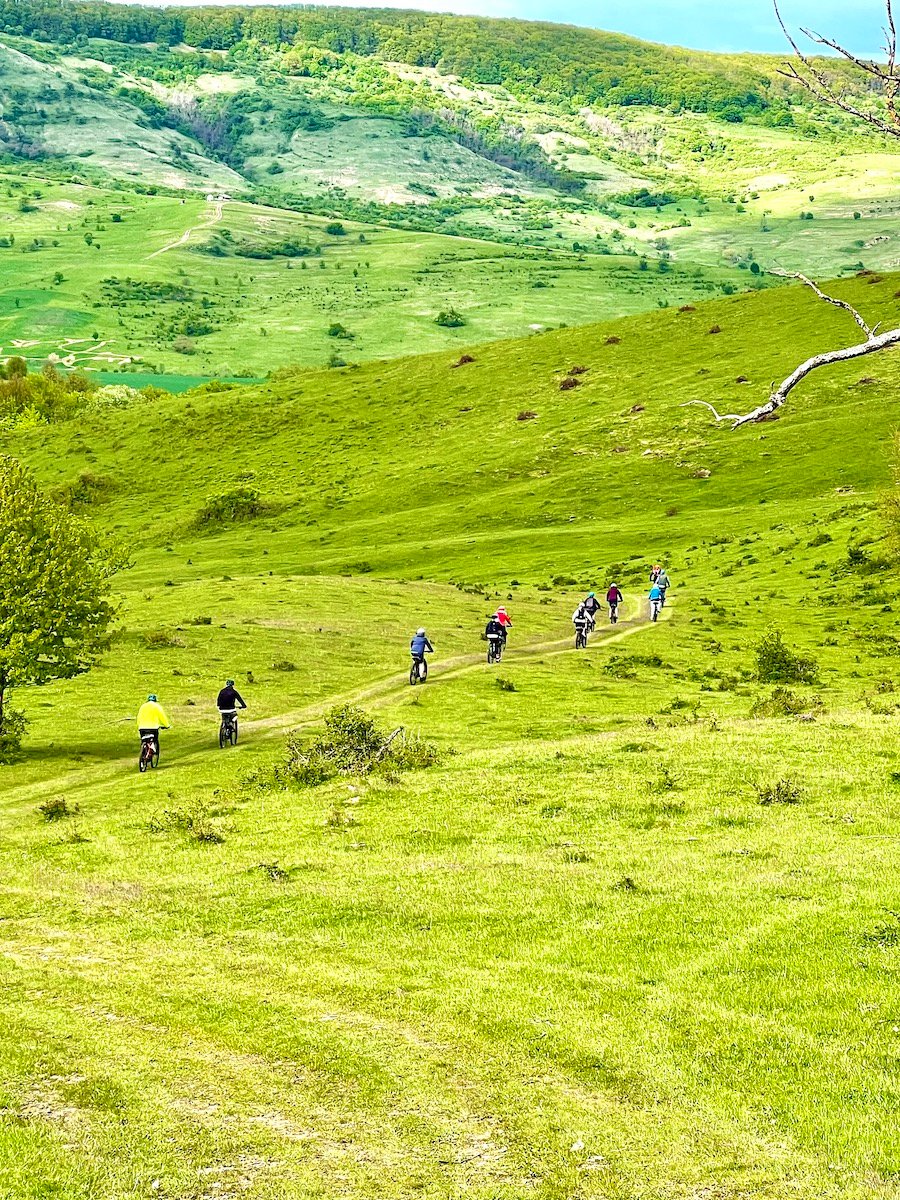
Our wonderful guides were there not only to show us where to go but to look after us along the way. As well as keeping the bikes in order they made sure the dogs didn’t attack us, told us about the history and culture of the area, and made sure that we supported the locals in a variety of ways with meals, accommodation, and visiting local craftspeople and farmers. And, on one of our trips we were accompanied by a very well-informed botanist who could identify all the plants we came across. (Csilla Szabó worked at the NECC – Nature Education Community Center )
One farming practice that is still thriving in the area is community herding of livestock. We witnessed cows, sheep, goats and horses being rounded up by the dogs and taken back to the village for the night. The most intriguing thing was that each animal seemed to know where it lived and would turn left or right into its quarters ready for milking and sleeping. Most families owned one or two cows but a few of them had more than a handful.
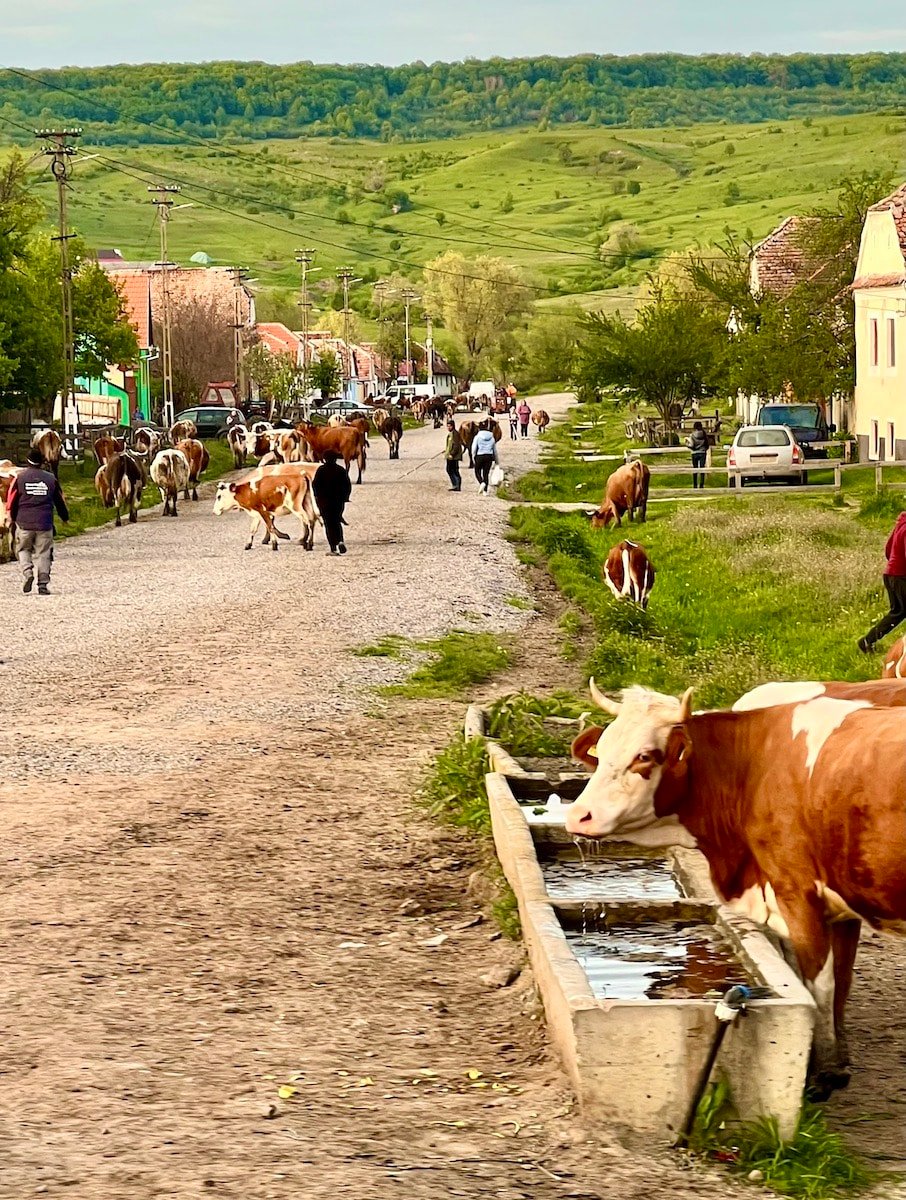
There were signs that modern world practices were creeping in. Some homes had put up fences surrounding their garden – they looked awful! And, I spotted one man spraying the grass outside his home – aargh.
But, it seems that the future for conservation farming and land management in the areas has rarely looked better. In part, this is because tourism has brought vital revenue to communities but also because it has helped the locals see the value in what they have when seen through the eyes of outsiders.

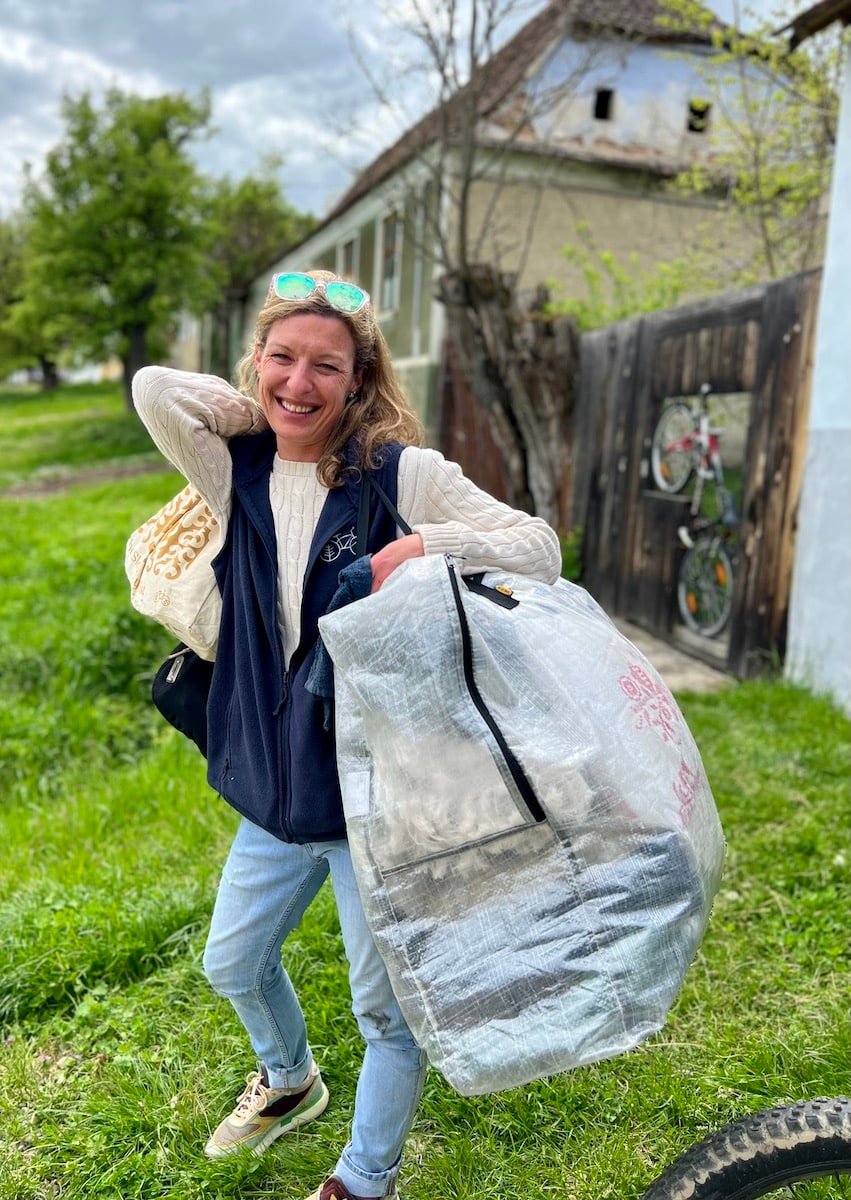
Thank you to the Slow Cyclist team, in particular our guides Sergiu and Iancu – see photo on the right with me. Also, Mara, who sorted out our food and accommodation needs.

Not forgetting Giovanna at Copsa Mare guest houses who has led the way in rejuvenating the area and bringing back employment for local artisans.

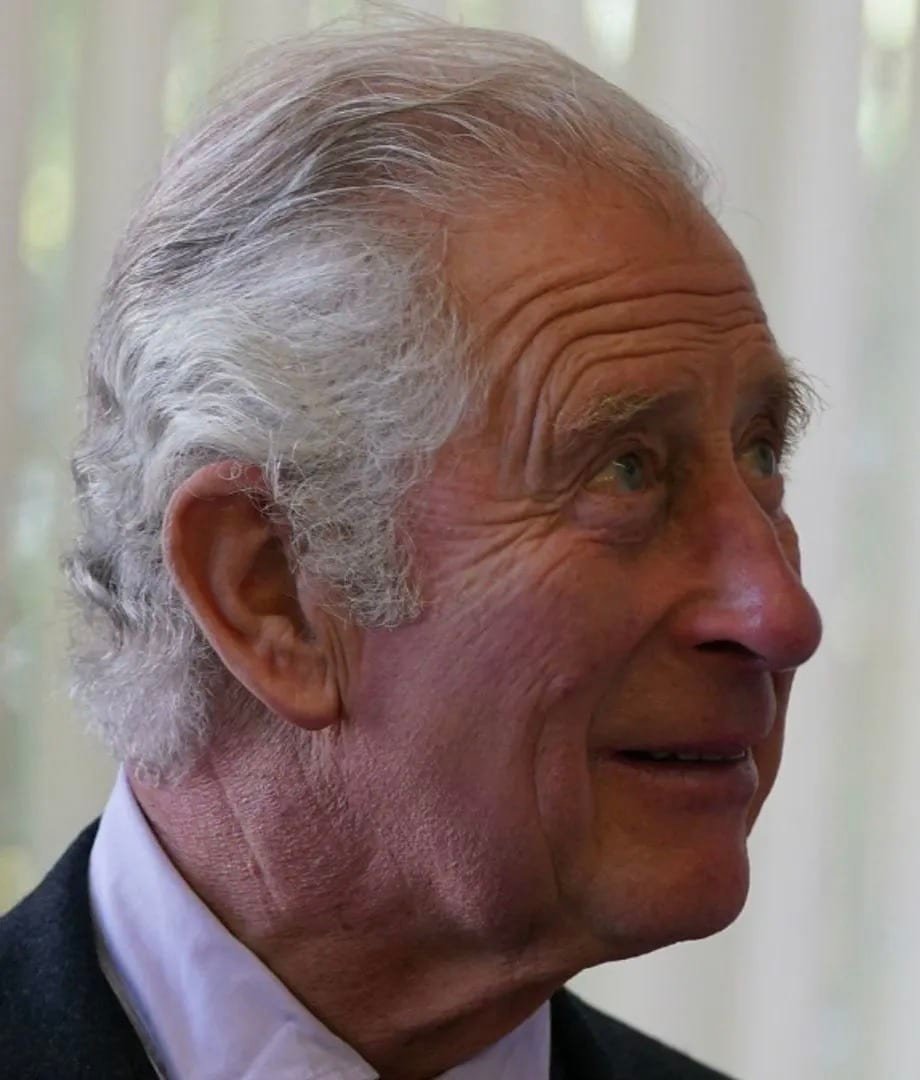
This house in Viscri is owned by Prince Charles – it is now a museum. His photo is in many of the places we stayed as he is a frequent visitor to the area and has supported local architecture, agriculture and communities.

